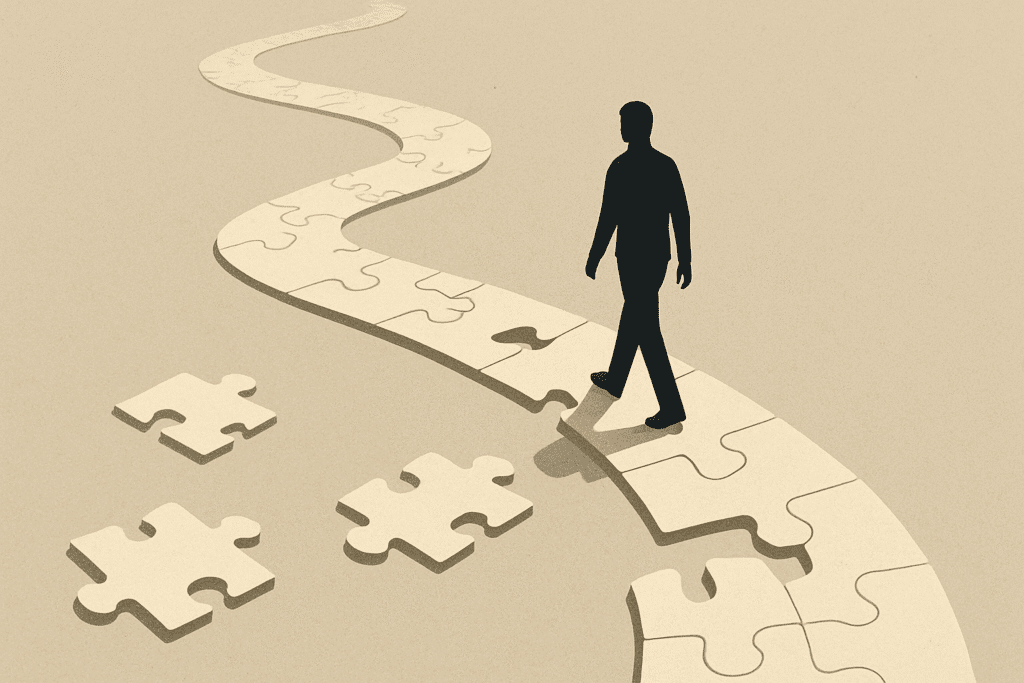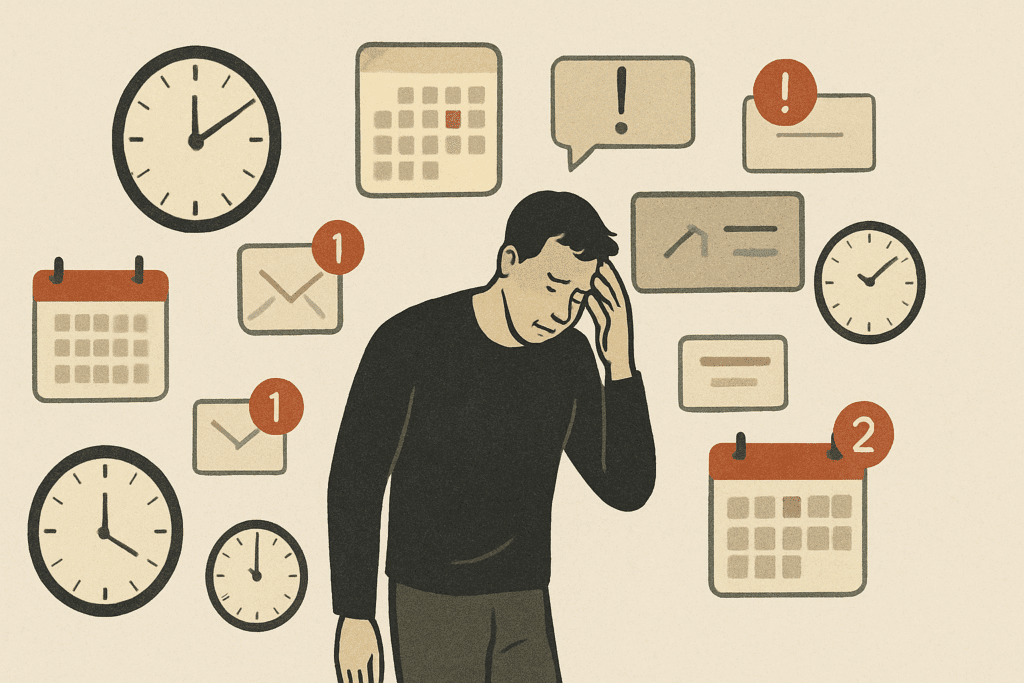Introduction

James Clear’s Atomic Habits has cemented its place as a cornerstone of modern self-improvement. With over 15 million copies sold, it’s frequently hailed as a masterclass in personal productivity, praised for its practical structure and simple, repeatable advice. At the heart of the book lies a powerful promise: consistent small changes, practiced daily, can lead to extraordinary results. Clear’s mantra, “Get 1% better every day,” has become almost gospel for those chasing personal growth.
But real life rarely plays out in neat percentages.
While Atomic Habits presents a useful framework, it tends to gloss over the deeper complexities that influence how people actually change. It frames transformation through a clean, four-step loop—cue, craving, response, reward—but this formula can miss the broader emotional, cultural, and psychological forces that truly shape behavior.
This isn’t an attempt to discredit habit-building. Rather, it’s an invitation to look beyond the surface. Because meaningful change isn’t just about repetition—it’s also about context, identity, and the unpredictable, often messy process of being human.
The Myth of Linear Progress

At the core of James Clear’s Atomic Habits lies an elegant idea: that consistent, incremental change—improving just 1% each day—will eventually lead to remarkable results. It’s a concept that feels logical, almost mathematical, and deeply comforting to anyone seeking structure in their lives. But here’s the uncomfortable reality: real growth doesn’t move in a straight line.
What Real Growth Actually Looks Like
Personal progress often resembles a tangled path, not a perfectly charted graph. As explored by Life Connections and Beyond Thought International, genuine growth often includes:
- Stagnant phases where nothing visibly shifts
- Unexpected setbacks that shake our confidence
- Sudden breakthroughs that can’t be explained by routine
- Silent periods that feel like delay but are actually preparation
This nonlinear rhythm is especially true in deeper, more personal areas—like mental health, emotional healing, creative pursuits, and identity shifts—where progress is shaped by complexity, not consistency.
Why Clear’s Model Misses the Mark
1. It Suggests Progress Is Predictable
The idea of “1% better every day” promotes the illusion of steady, upward momentum—like compound interest for the self. But unlike numbers in a bank account, human growth is influenced by shifting moods, life events, stress levels, and even timing. Repetition alone doesn’t guarantee results.
2. It Can Create Unnecessary Pressure
When real life doesn’t match the expected trajectory, many people internalize that failure. They might feel guilty, discouraged, or broken—not because they aren’t trying, but because the model doesn’t leave room for natural detours or downtime.
3. It Ignores the Power of Disruption
Some of the most meaningful transformations don’t come from steady habit stacking—they arrive through chaos. A breakdown, burnout, or emotional low point often becomes the turning point. Clear’s model doesn’t fully account for those dramatic, nonlinear leaps that can’t be scheduled or measured.
A More Honest Way to See Progress
“Growth isn’t a straight climb—it’s a spiral. You may revisit the same challenges, but each time from a deeper level.”
— Adapted from Beyond Thought International
Systems Over Goals — But What About Vision?
One of the most popular takeaways from Atomic Habits is James Clear’s often-quoted line: “You do not rise to the level of your goals. You fall to the level of your systems.” His argument is simple but powerful—focusing on consistent processes leads to more reliable results than obsessing over distant milestones. And in many cases, he’s right. Systems foster discipline, reduce resistance, and create sustainable momentum.
However, there’s an important caveat: without vision, systems can become lifeless routines—efficient, but empty.
What Clear Gets Right
Clear’s emphasis on systems has helped many people escape the cycle of setting lofty goals and abandoning them when motivation fades. Systems offer a framework that:
- Minimizes daily decision fatigue
- Encourages steady, repeatable action
- Works especially well for straightforward, habit-driven tasks like working out, journaling, or budgeting
Resources like Plan to Organize and Julien Florkin point out that systems provide structure, which makes habit-building more resilient and less dependent on willpower.
But Here’s What’s Missing
1. Systems Without Vision Lack Meaning
A system tells you what to do and how to do it. But it doesn’t tell you why it matters. Without a compelling vision behind the process, you risk falling into routines that feel productive on the surface, but offer little emotional or personal fulfillment. You can become highly efficient—at doing the wrong things.
2. Goals Add Emotional Energy
Where systems are practical, goals are emotional. They give your work a narrative. They reflect your values, dreams, and the kind of person you want to become. While systems help you show up daily, goals keep you connected to the bigger picture, especially during difficult or uninspired periods.
3. Vision Provides Direction in Uncertainty
A system helps you operate, but vision gives you direction. In moments of doubt, burnout, or transition, people don’t just need structure—they need purpose. When the system breaks or no longer fits, it’s vision that keeps you anchored and moving forward with clarity.
A Balanced Approach
“Systems are the engine. Vision is the destination. Without both, you’re either stalled or lost.”
— Inspired by ModelThinkers
Identity-Based Habits: Empowering or Confining?

One of the most compelling ideas in Atomic Habits is James Clear’s focus on identity-based habits. Rather than chasing outcomes (“I want to lose weight”) or obsessing over routines (“I’ll hit the gym five times a week”), Clear suggests that the most lasting changes come from anchoring habits in who you believe you are.
“I’m the kind of person who works out.”
“I’m a writer.”
“I’m a healthy eater.”
This shift—from doing to being—can indeed transform behavior. But if taken too literally, it can also become psychologically rigid and counterproductive.
Why It’s Empowering
Clear’s model has clear strengths, especially when it comes to long-term consistency. When you align your habits with your sense of identity:
- You’re not just doing something—you’re becoming someone.
- Actions start to feel more natural and less forced.
- Every repeated habit becomes a vote for the person you want to be.
This idea is backed by behavioral research: when habits resonate with how we see ourselves, we’re more likely to maintain them without needing constant motivation.
But Here’s the Catch
1. Rigid Identity Can Backfire
Defining yourself too narrowly—like “I’m a productivity machine” or “I never miss a workout”—can create unrealistic pressure to maintain that image at all costs. When life throws curveballs like illness, emotional exhaustion, or unexpected change, such a rigid self-concept can crumble. What began as motivation can turn into identity crisis.
2. Failure Feels Personal
If your behavior slips and you’re not acting in line with your chosen identity, it’s easy to spiral into self-doubt. Instead of revisiting the habit or adjusting the plan, many people internalize the failure:
“Maybe I’m not who I thought I was.”
This can lead to shame, guilt, and loss of motivation—all because a single lapse felt like an attack on the self.
3. Identity Isn’t Static
Human identity isn’t fixed. It evolves. You might be a runner today and a parent or caregiver tomorrow. You can be both a driven professional and someone learning to slow down. Over-identifying with one aspect of yourself—especially one tied to productivity or discipline—can lead to tunnel vision, burnout, or a disconnection from other valuable parts of your life.
A More Flexible Approach
“Identity-based habits are powerful—but only if you treat identity as a compass, not a cage.”
— Inspired by Ann Smyth and LVL Holistics
By viewing identity as something that can guide rather than restrict you, you leave space to grow, adapt, and shift without losing your sense of self.
The Four Laws: Useful but Incomplete
In Atomic Habits, James Clear introduces the “Four Laws of Behavior Change” as a straightforward method for creating positive habits and eliminating negative ones:
- Make it obvious
- Make it attractive
- Make it easy
- Make it satisfying
These principles are grounded in behavioral psychology and present a clear, actionable formula for habit formation. They’ve become widely popular for good reason—they’re easy to understand and simple to apply. But while effective for minor behavioral tweaks, these laws don’t fully capture the complexity of meaningful, long-term change.
Why They Work — To a Point
The Four Laws are based on the cue–craving–response–reward loop, a model rooted in operant conditioning. In practice, they’re highly effective for building low-friction, repeatable habits—things like drinking more water, reading a few pages daily, or going for short walks.
- They reduce mental resistance by streamlining action.
- They’re particularly useful for those just beginning a habit journey.
- The simplicity of the method makes it easy to stick with early wins.
In many ways, Clear’s model excels as a beginner-friendly toolkit for habit formation. But as the demands of change grow deeper—emotionally, socially, or situationally—it starts to show its limits.
Where the Framework Falls Short
1. It Overlooks Root Causes
The Four Laws largely focus on external prompts and behavioral responses. But many habits—especially those tied to emotional distress, trauma, or coping—don’t arise from simple triggers. They come from underlying pain or unmet needs, and addressing them requires more than clever cues and rewards.
2. It Assumes Ideal Conditions
Clear’s framework assumes a high level of personal agency. It works best for individuals with time, energy, and control over their environment. But people living with financial strain, chronic illness, caregiving responsibilities, or systemic constraints may find this approach unrealistic or insufficient.
3. It Can Oversimplify Complex Behavior
Human behavior isn’t always rational or programmable. Some habits are entangled with identity, relationships, and emotional survival. These require more than environmental tweaks—they demand deeper self-reflection, psychological support, or social connection, none of which are accounted for in the Four Laws.
A More Holistic View
“Behavior change isn’t just about friction and feedback loops. It’s about meaning, memory, and emotional safety.”
— Inspired by critiques from Psychology Today
To truly understand why people change—or why they struggle to—requires more than a checklist. It requires empathy, context, and a recognition that lasting change often lives beneath the surface of behavior.
The Productivity Trap: When Habits Become Self-Surveillance

James Clear’s Atomic Habits is widely credited for helping people become more focused, disciplined, and productive. But in a culture increasingly obsessed with optimization, even the most well-meaning habit systems can cross a line. What starts as self-improvement can quietly evolve into a system of self-surveillance—where every action is tracked, every moment measured, and every deviation viewed as a failure.
Instead of building freedom through structure, habits can begin to feel like a performance you’re constantly evaluating.
From Empowerment to Exhaustion
As noted by Microsoft’s UK Stories, the modern worker is often caught in a loop of feeling like they’re “never doing enough.” Habit trackers, morning routines, and productivity tools promise control—but they can also:
- Mask perfectionism as discipline
- Foster guilt around rest or spontaneity
- Create an internal voice that’s always whispering, “You should be doing more”
The goal may be balance, but the result can be burnout disguised as progress.
When Habits Become a Cage
1. Hyper-Tracking Fuels Anxiety
Tools like journals and habit-tracking apps are designed to build awareness—but over time, they can morph into systems of self-judgment. Missing a day doesn’t just break a streak—it triggers feelings of failure. As Lionesses of Africa points out, even time management techniques like time-blocking can become stress-inducing when applied rigidly, leaving no room for flexibility or emotional nuance.
2. Rest Becomes Conditional
Wellness routines, once meant to nourish, can end up functioning like checklists. As India Today reports, many people now feel guilty for skipping a workout or meditation session—not because they’ve lost interest, but because rest has been redefined as something to earn, not something essential. When wellness becomes performance, it loses its restorative power.
3. You Become a Project
When every habit is logged, every moment scheduled, and every routine optimized, it’s easy to lose the sense of being a person. You begin thinking in metrics—habit streaks, checklists, measurable wins. The more efficient you become, the more disconnected you may feel from the simple, unmeasurable question: “Am I okay?”
A Healthier Perspective
“To maximize our potential, we need to become as much of a perfectionist about our relaxation time as we are about our work time.”
— @AnxietyJosh, via Microsoft UK Stories
Sustainable growth isn’t about maximizing every second—it’s about making space to breathe, reflect, and live without needing to track it all.
Atomic Habits: Myth vs. Reality
| Myth | Reality |
| “1% better every day” leads to inevitable success. | Real progress is nonlinear—it includes setbacks, plateaus, and emotionally complex shifts. |
| Systems are all you need—goals are overrated. | Systems require vision and purpose to remain meaningful over time. |
| Identity-based habits create lasting change. | Rigid self-identities can lead to burnout, shame, or emotional fragility when disrupted. |
| The Four Laws of Behavior Change apply to all situations. | They’re effective for simple, low-stakes habits, not for deeper psychological challenges. |
| Habit tracking leads to freedom and clarity. | Excessive tracking can become self-policing, fostering guilt and performance anxiety. |
| Anyone can build habits if they follow the steps. | Habit formation is influenced by privilege, access, emotional resilience, and context. |
Conclusion: Habits Matter—But Humanity Matters More
Atomic Habits is an undeniably well-structured and accessible guide to changing behavior. James Clear’s emphasis on systems over willpower, along with his clear, actionable strategies, has helped millions take meaningful steps toward personal growth. But as the book has climbed to near-iconic status in the self-help world, it’s worth asking: have we taken its ideas too far, or too literally?
The principles—identity-based habits, the Four Laws of Behavior Change, and the promise of compounding 1% improvements—are valuable frameworks. But they’re just that: frameworks. Not laws of nature. They’re helpful starting points, not universal blueprints. And when applied without nuance, they risk reducing the messy, emotional reality of human change into a tidy checklist.
Because real transformation doesn’t come from repetition alone—it comes from self-awareness. It doesn’t thrive in endless optimization, but in purpose and connection. And the most meaningful growth isn’t just about becoming better—it’s about becoming kinder to yourself in the process.
So by all means, build better habits. Create structure. Seek progress. But don’t mistake tracking for healing, or productivity for self-worth. You’re not a project to perfect—you’re a person to care for.
In the end, the goal isn’t to become more efficient.
It’s to become more alive.
Nuanced Alternatives to Atomic Habits
If Atomic Habits leaves you wanting a more emotionally aware, philosophically grounded, or context-sensitive take on change, these titles offer deeper, more diverse perspectives:
- The Power of Habit by Charles Duhigg
Investigates the science behind habit loops—cue, routine, reward—with real-world stories from business, sports, and social change. A more journalistic and investigative take than Clear’s model. - Tiny Habits by B.J. Fogg
Written by a Stanford behavioral scientist, this book emphasizes starting small and emotionally safe. It’s especially helpful for people facing overwhelm, burnout, or mental health challenges. - How to Change by Katy Milkman
Based on research in behavioral science, this book tackles internal barriers—like procrastination, impulsivity, and forgetfulness—with tailored, evidence-based strategies. - Essentialism by Greg McKeown
Challenges the “do more” mindset and promotes focused simplicity. It’s a strong antidote to productivity overload and a guide to protecting your energy and priorities. - Four Thousand Weeks by Oliver Burkeman
A philosophical look at time and mortality, rejecting the fantasy of perfect time management. Burkeman encourages readers to embrace limitations rather than constantly trying to outpace them. - The Antidote by Oliver Burkeman
A deeper dive into the discomforts of life, drawing from Stoicism, Buddhism, and existential thought. Offers a refreshingly skeptical look at modern self-help and the pursuit of control. - Deep Work by Cal Newport
Focused on cultivating concentration and meaningful output in a world of distraction. Less about habit loops, more about intentional structure and protecting cognitive depth.
FAQs
Does Atomic Habits work for everyone?
No. It works best for people with time, stability, and low-friction goals. It’s less effective for those dealing with trauma, stress, or unstable environments.
Is the “1% better every day” rule realistic?
Not really. Progress isn’t linear—setbacks, plateaus, and emotional shifts are part of the process.
Are identity-based habits always helpful?
They can be—but if taken too far, they can create pressure, shame, or rigid self-expectations.
What if I can’t stick to my habits?
That’s normal. Emotional resistance, life stress, and context matter more than willpower alone.
Should I stop using habit trackers?
Only if they cause guilt or stress. Use them as tools—not proof of your worth.
